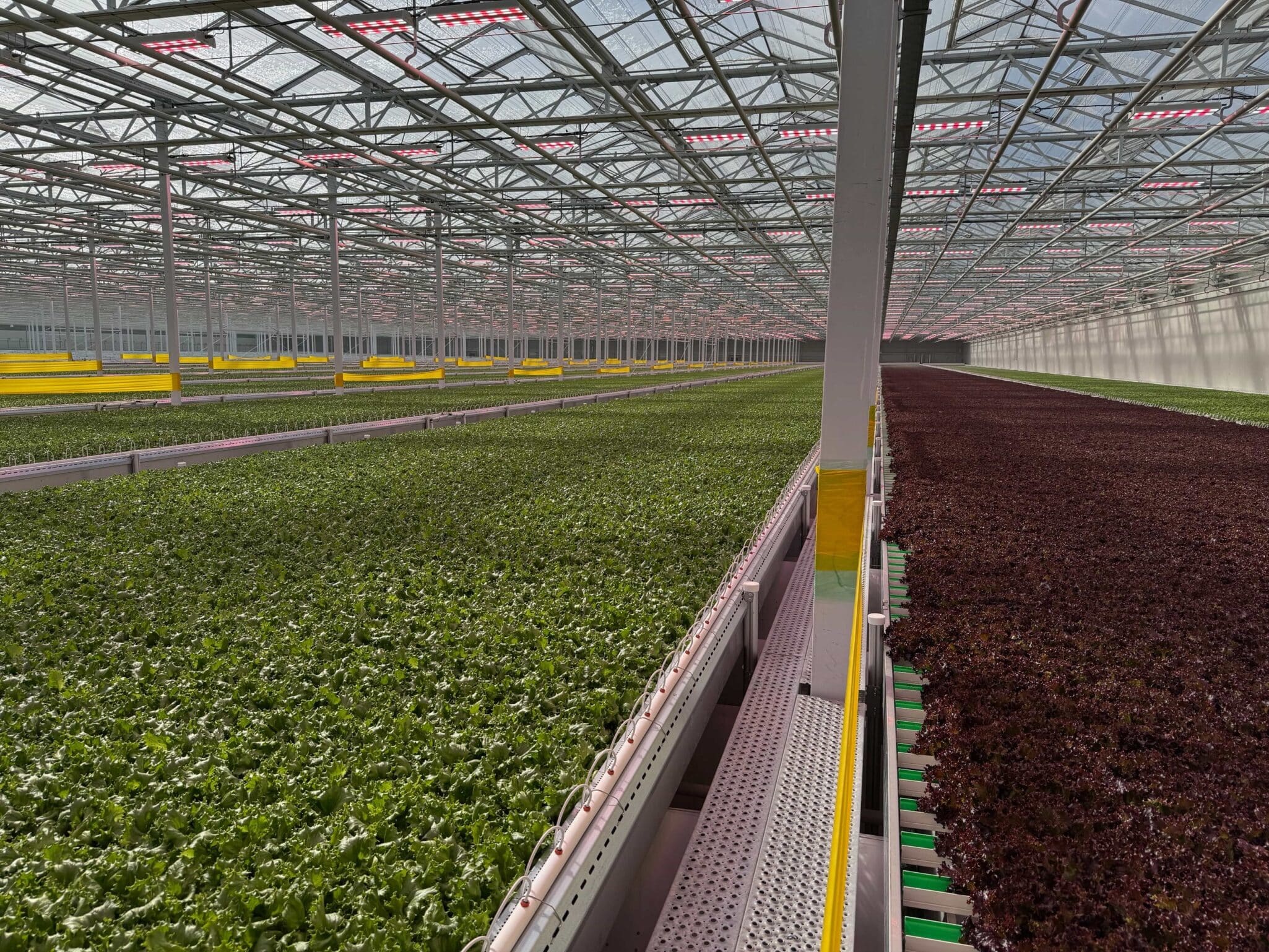Key Takeaways
- Green Automation’s fully automated growing system has been installed at Haven Greens, a 2-hectare greenhouse near Toronto, Ontario.
- The installation marks growing momentum for greenhouse-grown leafy greens in Canada, historically lagging behind U.S. production in this segment.
- Haven Greens is now producing baby and teen leaf lettuces using Green Automation’s camera-guided, RFID-tracked systems with no human contact during growth.
- The greenhouse aims to reduce Canada’s reliance on imported lettuce, which currently accounts for 97% of national consumption.
- Sustainability measures under consideration include solar power, microgrid integration, and combined heat and power systems.
Green Automation Supports Expansion of Canada’s Leafy Greens Sector at Haven Greens
Green Automation, a provider of automated greenhouse systems, has successfully completed the installation of its advanced leafy greens production platform at Haven Greens, a new controlled environment agriculture (CEA) facility in King City, Ontario—just 30 minutes north of Toronto.
The launch of Haven Greens coincides with rising interest in greenhouse-grown leafy greens in Canada. While the country leads North America in CEA production of tomatoes, cucumbers, and peppers, large-scale investments in lettuce and other leafy greens have historically been concentrated in the U.S. This trend is beginning to shift with the emergence of facilities like Haven Greens.
“The effectiveness of the growing system is a deciding factor for a sustainable operation,” said Patrik Borenius, CEO of Green Automation Americas.
Automated System Delivers High Yields and Labor Efficiency
RFID-Tracked Gutters and Hands-Free Harvesting
Haven Greens’ greenhouse is outfitted with Green Automation’s patented system for fully automated baby and teen leaf cut lettuce production. Key features include:
- Double-row gutters with automated logistics and RFID tracking
- Hands-free harvesting and mixing for packaged leafy greens
- Built-in data analytics for yield, harvest timing, and production optimization
Each gutter is monitored and traced throughout the facility, allowing operators to manage production without manual intervention.
Jay Willmot, CEO of Haven Greens, emphasized the value of local, pesticide-free produce: “With our fully automated and climate-controlled greenhouse, we can reliably deliver high-quality lettuce all year round… and it is grown right here, 30 minutes outside Toronto.”
Food Security and Local Supply Drive Market Demand
Reducing Canada's Dependency on Imports
Historically, 97% of Canada’s lettuce has been imported, primarily from the United States and Mexico. Haven Greens aims to change that by offering three initial varieties:
- Baby Green Leaf
- Baby Red + Green Leaf
- Baby Spring Mix
These products are now available at grocery stores throughout Ontario, with rollout to national retailers planned in the coming months.
Green Automation Ensures Smooth Installation and Continued Support
4-Month Build Completed with Local Workforce
Installation of the system was completed in approximately four months, with close collaboration between Green Automation’s team and local labor. The first seeding and harvest occurred in March 2025.
“The quality and yield of the leafy greens produced at Haven Greens during the initial ramp-up are exceptional,” said Borenius.
Green Automation continues to support Haven Greens through remote assistance and annual on-site maintenance services via its Customer Portal.
Sustainability Initiatives and Future Expansion Plans
From Solar Power to a Microgrid Vision
Sustainability remains central to Haven Greens’ mission. Planned upgrades include:
- A solar array to power the 2-hectare facility
- A localized microgrid system with combined heat and power
- Potential future battery storage integration
Additionally, the company plans to capture turbine waste streams to improve overall energy efficiency.
“Integrating sustainable methods as well as yield-increasing innovations will always be a top priority,” said Willmot.
The current site represents the first of two development phases, with a second 2-hectare expansion under consideration.


